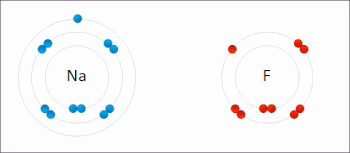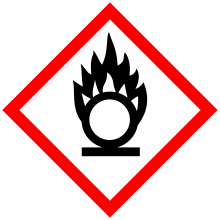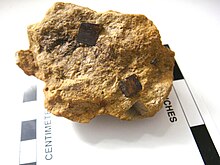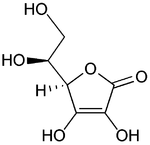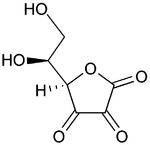From Wikipedia, the free encyclopedia
Groupthink requires individuals to avoid raising controversial issues or alternative solutions, and there is loss of individual creativity, uniqueness and independent thinking. The dysfunctional group dynamics of the "ingroup" produces an "illusion of invulnerability" (an inflated certainty that the right decision has been made). Thus the "ingroup" significantly overrates its own abilities in decision-making and significantly underrates the abilities of its opponents (the "outgroup"). Furthermore, groupthink can produce dehumanizing actions against the "outgroup".
Antecedent factors such as group cohesiveness, faulty group structure, and situational context (e.g., community panic) play into the likelihood of whether or not groupthink will impact the decision-making process.
Groupthink is a construct of social psychology but has an extensive reach and influences literature in the fields of communication studies, political science, management, and organizational theory,[1] as well as important aspects of deviant religious cult behaviour.[2][3]
Groupthink is sometimes stated to occur (more broadly) within natural groups within the community, for example to explain the lifelong different mindsets of conservatives versus liberals,[4] or the solitary nature of introverts.[5] However, this conformity of viewpoints within a group does not mainly involve deliberate group decision-making, and might be better explained by the collective confirmation bias of the individual members of the group.
Most of the initial research on groupthink was conducted by Irving Janis, a research psychologist from Yale University.[6] Janis published an influential book in 1972, which was revised in 1982.[7][8] Janis used the Bay of Pigs disaster (the failed invasion of Castro's Cuba in 1961) and the Japanese attack on Pearl Harbor in 1941 as his two prime case studies. Later studies have evaluated and reformulated his groupthink model.[9][10]
History
From "Groupthink" by William H. Whyte, Jr. in Fortune magazine, March 1952
William H. Whyte, Jr. coined the term in 1952 in Fortune magazine:
Groupthink being a coinage – and, admittedly, a loaded one – a working definition is in order. We are not talking about mere instinctive conformity – it is, after all, a perennial failing of mankind. What we are talking about is a rationalized conformity – an open, articulate philosophy which holds that group values are not only expedient but right and good as well.[11][12]Irving Janis pioneered the initial research on the groupthink theory. He does not cite Whyte, but coined the term by analogy with "doublethink" and similar terms that were part of the newspeak vocabulary in the novel Nineteen Eighty-Four by George Orwell. He initially defined groupthink as follows:
I use the term groupthink as a quick and easy way to refer to the mode of thinking that persons engage in when concurrence-seeking becomes so dominant in a cohesive ingroup that it tends to override realistic appraisal of alternative courses of action. Groupthink is a term of the same order as the words in the newspeak vocabulary George Orwell used in his dismaying world of 1984. In that context, groupthink takes on an invidious connotation. Exactly such a connotation is intended, since the term refers to a deterioration in mental efficiency, reality testing and moral judgments as a result of group pressures.[6]:43He went on to write:
The main principle of groupthink, which I offer in the spirit of Parkinson's Law, is this: The more amiability and esprit de corps there is among the members of a policy-making ingroup, the greater the danger that independent critical thinking will be replaced by groupthink, which is likely to result in irrational and dehumanizing actions directed against outgroups.[6]:44Janis set the foundation for the study of groupthink starting with his research in the American Soldier Project where he studied the effect of extreme stress on group cohesiveness. After this study he remained interested in the ways in which people make decisions under external threats. This interest led Janis to study a number of "disasters" in American foreign policy, such as failure to anticipate the Japanese attack on Pearl Harbor (1941); the Bay of Pigs Invasion fiasco (1961); and the prosecution of the Vietnam War (1964–67) by President Lyndon Johnson. He concluded that in each of these cases, the decisions occurred largely because of groupthink, which prevented contradictory views from being expressed and subsequently evaluated.
After the publication of Janis' book Victims of Groupthink in 1972,[7] and a revised edition with the title Groupthink: Psychological Studies of Policy Decisions and Fiascoes in 1982,[8] the concept of groupthink was used[by whom?] to explain many other faulty decisions in history. These events included Nazi Germany's decision to invade the Soviet Union in 1941, the Watergate Scandal and others. Despite the popularity of the concept of groupthink, fewer than two dozen studies addressed the phenomenon itself following the publication of Victims of Groupthink, between the years 1972 and 1998.[1]:107 This is surprising considering how many fields of interests it spans, which include political science, communications, organizational studies, social psychology, management, strategy, counseling, and marketing. One can most likely explain this lack of follow-up in that group research is difficult to conduct, groupthink has many independent and dependent variables, and it is unclear "how to translate [groupthink's] theoretical concepts into observable and quantitative constructs."[1]:107–108
Nevertheless, outside research psychology and sociology, wider culture has come to detect groupthink (somewhat fuzzily defined) in observable situations, for example:
- " [...] critics of Twitter point to the predominance of the hive mind in such social media, the kind of groupthink that submerges independent thinking in favor of conformity to the group, the collective"[13]
- "[...] leaders often have beliefs which are very far from matching reality and which can become more extreme as they are encouraged by their followers. The predilection of many cult leaders for abstract, ambiguous, and therefore unchallengeable ideas can further reduce the likelihood of reality testing, while the intense milieu control exerted by cults over their members means that most of the reality available for testing is supplied by the group environment. This is seen in the phenomenon of 'groupthink', alleged to have occurred, notoriously, during the Bay of Pigs fiasco."[14]
- "Groupthink by Compulsion [...] [G]roupthink at least implies voluntarism. When this fails, the organization is not above outright intimidation. [...] In [a nationwide telecommunications company], refusal by the new hires to cheer on command incurred consequences not unlike the indoctrination and brainwashing techniques associated with a Soviet-era gulag."[15]
Symptoms
To make groupthink testable, Irving Janis devised eight symptoms indicative of groupthink.Type I: Overestimations of the group — its power and morality
- Illusions of invulnerability creating excessive optimism and encouraging risk taking.
- Unquestioned belief in the morality of the group, causing members to ignore the consequences of their actions.
- Rationalizing warnings that might challenge the group's assumptions.
- Stereotyping those who are opposed to the group as weak, evil, biased, spiteful, impotent, or stupid.
- Self-censorship of ideas that deviate from the apparent group consensus.
- Illusions of unanimity among group members, silence is viewed as agreement.
- Direct pressure to conform placed on any member who questions the group, couched in terms of "disloyalty"
- Mindguards— self-appointed members who shield the group from dissenting information.
Causes
Janis prescribed three antecedent conditions to groupthink.[7]:91. High group cohesiveness
Janis emphasized that cohesiveness is the main factor that leads to groupthink. Groups that lack cohesiveness can of course make bad decisions, but they do not experience groupthink. In a cohesive group, members avoid speaking out against decisions, avoid arguing with others, and work towards maintaining friendly relationships in the group. If cohesiveness gets to such a high level where there are no longer disagreements between members, then the group is ripe for groupthink.
- deindividuation: group cohesiveness becomes more important than individual freedom of expression
Cohesion is necessary for groupthink, but it becomes even more likely when the group is organized in ways that disrupt the communication of information, and when the group engages in carelessness while making decisions.
- insulation of the group: can promote the development of unique, inaccurate perspectives on issues the group is dealing with, and can then lead to faulty solutions to the problem.
- lack of impartial leadership: leaders can completely control the group discussion, by planning what will be discussed, only allowing certain questions to be asked, and asking for opinions of only certain people in the group. Closed style leadership is when leaders announce their opinions on the issue before the group discusses the issue together. Open style leadership is when leaders withheld their opinion until a later time in the discussion. Groups with a closed style leader have been found to be more biased in their judgments, especially when members had a high degree for certainty. Thus, it is best for leaders to take an open style leadership approach, so that the group can discuss the issue without any pressures from the leader.
- lack of norms requiring methodological procedures
- homogeneity of members' social backgrounds and ideology
- highly stressful external threats: High stake decisions can create tension and anxiety, and group members then may cope with the decisional stress in irrational ways. Group members may rationalize their decision by exaggerating the positive consequences and minimizing the possible negative consequences. In attempt to minimize the stressful situation, the group will make a quick decision with little to no discussion or disagreement about the decision. Studies have shown that groups under high stress are more likely to make errors, lose focus of the ultimate goal, and use procedures that members know have not been effective in the past.
- recent failures: can lead to low self-esteem, resulting in agreement with the group in fear of being seen as wrong.
- excessive difficulties on the decision-making task
Although it is possible for a situation to contain all three of these factors, all three are not always present even when groupthink is occurring. Janis considered a high degree of cohesiveness to be the most important antecedent to producing groupthink and always present when groupthink was occurring; however, he believed high cohesiveness would not always produce groupthink. A very cohesive group abides to all group norms; whether or not groupthink arises is dependent on what the group norms are. If the group encourages individual dissent and alternative strategies to problem solving, it is likely that groupthink will be avoided even in a highly cohesive group. This means that high cohesion will lead to groupthink only if one or both of the other antecedents is present, situational context being slightly more likely than structural faults to produce groupthink.[16]
Prevention
As observed by Aldag & Fuller (1993), the groupthink phenomenon seems to rest on a set of unstated and generally restrictive assumptions:[17]- The purpose of group problem solving is mainly to improve decision quality
- Group problem solving is considered a rational process.
- Benefits of group problem solving:
- variety of perspectives
- more information about possible alternatives
- better decision reliability
- dampening of biases
- social presence effects
- Groupthink prevents these benefits due to structural faults and provocative situational context
- Groupthink prevention methods will produce better decisions
- An illusion of well-being is presumed to be inherently dysfunctional.
- Group pressures towards consensus lead to concurrence-seeking tendencies.
According to Janis, decision-making groups are not necessarily destined to groupthink. He devised ways of preventing groupthink:[7]:209–215
- Leaders should assign each member the role of "critical evaluator". This allows each member to freely air objections and doubts.
- Leaders should not express an opinion when assigning a task to a group.
- Leaders should absent themselves from many of the group meetings to avoid excessively influencing the outcome.
- The organization should set up several independent groups, working on the same problem.
- All effective alternatives should be examined.
- Each member should discuss the group's ideas with trusted people outside of the group.
- The group should invite outside experts into meetings. Group members should be allowed to discuss with and question the outside experts.
- At least one group member should be assigned the role of Devil's advocate. This should be a different person for each meeting.
Empirical findings and meta-analysis
Testing groupthink in a laboratory is difficult because synthetic settings remove groups from real social situations, which ultimately changes the variables conducive or inhibitive to groupthink.[18] Because of its subjective nature, researchers have struggled to measure groupthink as a complete phenomenon, instead frequently opting to measure its particular factors. These factors range from causal to effectual and focus on group and situational aspects.[19][20]Park (1990) found that "only 16 empirical studies have been published on groupthink," and concluded that they "resulted in only partial support of his [Janis's] hypotheses."[21]:230 Park concludes, "despite Janis' claim that group cohesiveness is the major necessary antecedent factor, no research has showed a significant main effect of cohesiveness on groupthink."[21]:230 Park also concludes that research on the interaction between group cohesiveness and leadership style does not support Janis' claim that cohesion and leadership style interact to produce groupthink symptoms.[21] Park presents a summary of the results of the studies analyzed. According to Park, a study by Huseman and Drive (1979) indicates groupthink occurs in both small and large decision-making groups within businesses.[21] This results partly from group isolation within the business. Manz and Sims (1982) conducted a study showing that autonomous work groups are susceptible to groupthink symptoms in the same manner as decisions making groups within businesses.[21][22] Fodor and Smith (1982) produced a study revealing that group leaders with high power motivation create atmospheres more susceptible to groupthink.[21][23] Leaders with high power motivation possess characteristics similar to leaders with a "closed" leadership style—an unwillingness to respect dissenting opinion. The same study indicates that level of group cohesiveness is insignificant in predicting groupthink occurrence. Park summarizes a study performed by Callaway, Marriott, and Esser (1985) in which groups with highly dominant members "made higher quality decisions, exhibited lowered state of anxiety, took more time to reach a decision, and made more statements of disagreement/agreement."[21]:232[24] Overall, groups with highly dominant members expressed characteristics inhibitory to groupthink. If highly dominant members are considered equivalent to leaders with high power motivation, the results of Callaway, Marriott, and Esser contradict the results of Fodor and Smith. A study by Leana (1985) indicates the interaction between level of group cohesion and leadership style is completely insignificant in predicting groupthink.[21][25] This finding refutes Janis' claim that the factors of cohesion and leadership style interact to produce groupthink. Park summarizes a study by McCauley (1989) in which structural conditions of the group were found to predict groupthink while situational conditions did not.[10][21] The structural conditions included group insulation, group homogeneity, and promotional leadership. The situational conditions included group cohesion. These findings refute Janis' claim about group cohesiveness predicting groupthink.
Overall, studies on groupthink have largely focused on the factors (antecedents) that predict groupthink. Groupthink occurrence is often measured by number of ideas/solutions generated within a group, but there is no uniform, concrete standard by which researchers can objectively conclude groupthink occurs.[18] The studies of groupthink and groupthink antecedents reveal a mixed body of results. Some studies indicate group cohesion and leadership style to be powerfully predictive of groupthink, while other studies indicate the insignificance of these factors. Group homogeneity and group insulation are generally supported as factors predictive of groupthink.
Case studies
Politics and military
Groupthink can have a strong hold on political decisions and military operations, which may result in enormous wastage of human and material resources. Highly qualified and experienced politicians and military commanders sometimes make very poor decisions when in a suboptimal group setting. Scholars such as Janis and Raven attribute political and military fiascoes, such as the Bay of Pigs Invasion, the Vietnam War, and the Watergate scandal, to the effect of groupthink.[8][26] More recently, Dina Badie argued that groupthink was largely responsible for the shift in the U.S. administration's view on Saddam Hussein that eventually led to the 2003 invasion of Iraq by the United States.[27] After the September 11 attacks, "stress, promotional leadership, and intergroup conflict" were all factors that gave rise to the occurrence of groupthink.[27]:283 Political case studies of groupthink serve to illustrate the impact that the occurrence of groupthink can have in today's political scene.Bay of Pigs invasion and the Cuban Missile Crisis
The United States Bay of Pigs Invasion of April 1961 was the primary case study that Janis used to formulate his theory of groupthink.[6] The invasion plan was initiated by the Eisenhower administration, but when the Kennedy administration took over, it "uncritically accepted" the plan of the Central Intelligence Agency (CIA).[6]:44 When some people, such as Arthur M. Schlesinger, Jr. and Senator J. William Fulbright, attempted to present their objections to the plan, the Kennedy team as a whole ignored these objections and kept believing in the morality of their plan.[6]:46 Eventually Schlesinger minimized his own doubts, performing self-censorship.[6]:74 The Kennedy team stereotyped Fidel Castro and the Cubans by failing to question the CIA about its many false assumptions, including the ineffectiveness of Castro's air force, the weakness of Castro's army, and the inability of Castro to quell internal uprisings.[6]:46Janis claimed the fiasco that ensued could have been prevented if the Kennedy administration had followed the methods to preventing groupthink adopted during the Cuban Missile Crisis, which took place just one year later in October 1962. In the latter crisis, essentially the same political leaders were involved in decision-making, but this time they learned from their previous mistake of seriously under-rating their opponents.[6]:76
Pearl Harbor
The attack on Pearl Harbor on December 7, 1941 is a prime example of groupthink. A number of factors such as shared illusions and rationalizations contributed to the lack of precaution taken by Naval officers based in Hawaii. The United States had intercepted Japanese messages and they discovered that Japan was arming itself for an offensive attack somewhere in the Pacific Ocean. Washington took action by warning officers stationed at Pearl Harbor, but their warning was not taken seriously. They assumed that the Empire of Japan was taking measures in the event that their embassies and consulates in enemy territories were usurped.The Navy and Army in Pearl Harbor also shared rationalizations about why an attack was unlikely. Some of them included:[8]:83,85
- "The Japanese would never dare attempt a full-scale surprise assault against Hawaii because they would realize that it would precipitate an all-out war, which the United States would surely win."
- "The Pacific Fleet concentrated at Pearl Harbor was a major deterrent against air or naval attack."
- "Even if the Japanese were foolhardy to send their carriers to attack us [the United States], we could certainly detect and destroy them in plenty of time."
- "No warships anchored in the shallow water of Pearl Harbor could ever be sunk by torpedo bombs launched from enemy aircraft."
United States presidential election, 2016
In the weeks and months preceding the United States presidential election, 2016, there was near-unanimity among news media outlets and polling organizations that Hillary Clinton's election was extremely likely. For example, on November 7, the day before the election, The New York Times opined that Clinton then had "a consistent and clear advantage in states worth at least 270 electoral votes."[28] The Times estimated the probability of a Clinton win at 84%.[29] Also on November 7, Reuters estimated the probability of Clinton defeating Donald Trump in the election at 90%,[30] and The Huffington Post put Clinton's odds of winning at 98.2% based on "9.8 million simulations."[31]The disconnect between the election results and the pre-election estimates, both from news media outlets and from pollsters, may have been due to two factors: political correctness, in that few news and polling professionals would admit to supporting or considering Trump as a viable candidate for fear of peer pressure; and polling error, in that a significant number of Trump supporters contacted by pollsters may have lied to or misled the pollsters—again possibly due to their fear of public opprobrium if they were identified as such.[32]




